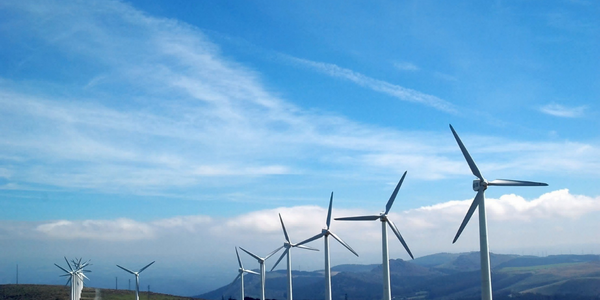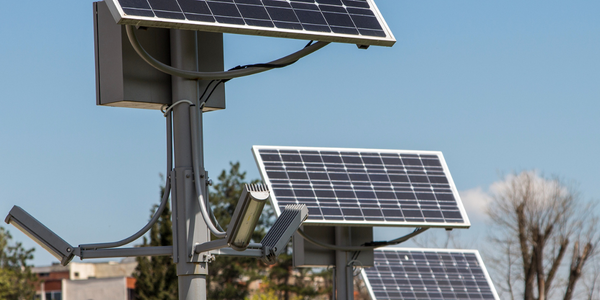Eurowind Energy: Safeguarding Critical Energy Infrastructure with Check Point Infinity Total Protection

Technology Category
- Cybersecurity & Privacy - Network Security
- Robots - Wheeled Robots
Applicable Industries
- National Security & Defense
- Renewable Energy
Use Cases
- Cybersecurity
- Tamper Detection
Services
- Cloud Planning, Design & Implementation Services
- Cybersecurity Services
About The Customer
Founded in 2016, Eurowind Energy has grown to become one of Europe’s leading developers and operators of PV- and wind turbine projects. The company operates throughout Europe, including Germany, Denmark, Poland, Romania, Sweden, Bulgaria, and the United Kingdom. Headquartered in Denmark, Eurowind Energy employs 130 people. The company plays a central role in strengthening the security of energy assets as renewable energy becomes a critical piece of national infrastructure. Countries throughout Europe heavily rely on an uninterrupted supply of wind or solar energy (PV-energy), making cybersecurity a key concern for Eurowind.
The Challenge
Eurowind Energy, one of Europe's leading developers and operators of photovoltaic (PV) and wind turbine projects, faced a significant challenge in establishing a comprehensive cybersecurity infrastructure that could adapt during periods of rapid business growth. The company needed to prevent malicious cyber-attacks from impacting its IT infrastructure and protect the critical energy business and industry from downtime. The growth of renewable energy from a niche investment to a critical piece of national infrastructure has increased the need for robust cybersecurity measures. As national energy grids become smarter and more international, the flow of data and touch points increase, thereby expanding the potential attack surface. Eurowind wanted to establish complete visibility of its security posture across its network, cloud, and mobile environments. It sought immediate protection and prevention, as well as an understanding of new threats.
The Solution
Eurowind Energy adopted Check Point Infinity Total Protection, a security model that provides enterprises with complete threat prevention against multi-vector Gen V cyber-attacks. This solution is offered in a simple, all-inclusive, per-user, per-year subscription. Check Point 5800 Next Generation Firewalls were used in the Eurowind head office, with Check Point 3100 firewalls in branch offices. To protect Eurowind’s Office 365 users, Check Point CloudGuard SaaS, a cloud service that prevents attacks on SaaS applications, was deployed. Concerns around mobile usage were addressed with SandBlast Mobile. Infinity Total Protection is the only subscription offering available today that includes both network security hardware and software, with fully integrated endpoint, cloud and mobile protections and zero-day threat prevention, together with unified management and 24/7 premium support.
Operational Impact

Case Study missing?
Start adding your own!
Register with your work email and create a new case study profile for your business.
Related Case Studies.

Case Study
Remote Monitoring & Predictive Maintenance App for a Solar Energy System
The maintenance & tracking of various modules was an overhead for the customer due to the huge labor costs involved. Being an advanced solar solutions provider, they wanted to ensure early detection of issues and provide the best-in-class customer experience. Hence they wanted to automate the whole process.

Case Study
Vestas: Turning Climate into Capital with Big Data
Making wind a reliable source of energy depends greatly on the placement of the wind turbines used to produce electricity. Turbulence is a significant factor as it strains turbine components, making them more likely to fail. Vestas wanted to pinpoint the optimal location for wind turbines to maximize power generation and reduce energy costs.

Case Study
Siemens Wind Power
Wind provides clean, renewable energy. The core concept is simple: wind turbines spin blades to generate power. However, today's systems are anything but simple. Modern wind turbines have blades that sweep a 120 meter circle, cost more than 1 million dollars and generate multiple megawatts of power. Each turbine may include up to 1,000 sensors and actuators – integrating strain gages, bearing monitors and power conditioning technology. The turbine can control blade speed and power generation by altering the blade pitch and power extraction. Controlling the turbine is a sophisticated job requiring many cooperating processors closing high-speed loops and implementing intelligent monitoring and optimization algorithms. But the real challenge is integrating these turbines so that they work together. A wind farm may include hundreds of turbines. They are often installed in difficult-to-access locations at sea. The farm must implement a fundamentally and truly distributed control system. Like all power systems, the goal of the farm is to match generation to load. A farm with hundreds of turbines must optimize that load by balancing the loading and generation across a wide geography. Wind, of course, is dynamic. Almost every picture of a wind farm shows a calm sea and a setting sun. But things get challenging when a storm goes through the wind farm. In a storm, the control system must decide how to take energy out of gusts to generate constant power. It must intelligently balance load across many turbines. And a critical consideration is the loading and potential damage to a half-billion-dollar installed asset. This is no environment for a slow or undependable control system. Reliability and performance are crucial.

Case Study
Remote Monitoring and Control for a Windmill Generator
As concerns over global warming continue to grow, green technologies are becoming increasingly popular. Wind turbine companies provide an excellent alternative to burning fossil fuels by harnessing kinetic energy from the wind and converting it into electricity. A typical wind farm may include over 80 wind turbines so efficient and reliable networks to manage and control these installations are imperative. Each wind turbine includes a generator and a variety of serial components such as a water cooler, high voltage transformer, ultrasonic wind sensors, yaw gear, blade bearing, pitch cylinder, and hub controller. All of these components are controlled by a PLC and communicate with the ground host. Due to the total integration of these devices into an Ethernet network, one of our customers in the wind turbine industry needed a serial-to-Ethernet solution that can operate reliably for years without interruption.

Case Study
Temperature monitoring for vaccine fridges
Dulas wanted a way to improve the reliability of the cold chain, facilitating maintenance and ensuring fewer vaccines are spoiled. Dulas wanted an M2M solution which would enable them to record and report the temperature inside vaccine refrigerators.

Case Study
IoT Powering A New Way to Light Streets with Bifacial Solar Panels
When James Meringer’s commercial contracting business experienced a rapid increase in solar projects, he also saw an opportunity to extend the benefits of solar by using the bifacial solar panels he’d become familiar with in new ways. Bifacial solar panels enable sunlight from both sides of the panel, making it a more efficient harvest of solar power. Seeing the panel’s power, James and his team set out to use the same technology for street lighting. Until now, solar street lights have served as utilitarian solutions that force designers to choose between form and function. The Mira Bella Energy team has changed that.






